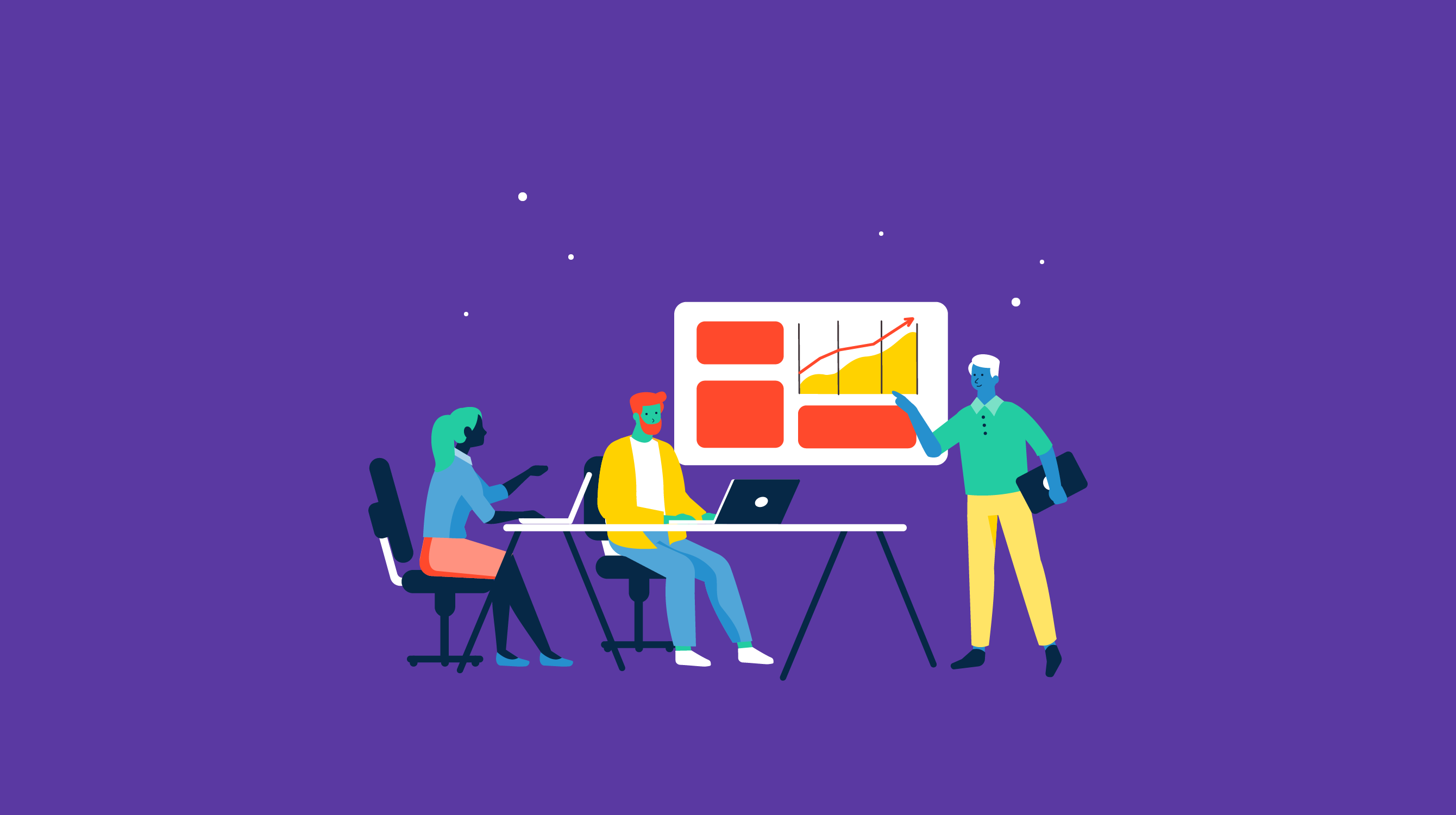What is skills tracking?
Skills tracking is a way to ensure employees possess the necessary skills to attain their highest working potential. It helps bridge the gap between the skills people already possess and the ones they need to develop.
Every business has different and constantly changing requirements. Employee competencies need to be tracked regularly to ensure they adapt to these skills demands.
Effective skill tracking can increase employee retention, improve productivity, and reduce time spent on everyday tasks. It can also refine communication within the organization and facilitate continuous growth.
Skills management software can identify and track specific competencies. Data collected from these systems can be used to review management strategies, training and development programs, hiring campaigns, and overall business planning.
Types of skills to track
Skills tracking differs from business to business. It’s heavily reliant on the kind of skills managers want their employees to be proficient in, as well as the extent to which those skills are used in the employee’s job role. Hard and soft skills are the two primary types tracked by skills tracking software.
Hard skills
Hard skills are role-centric and tend to be more technical. Tracking hard skills is based on how much usage they get during the workday. Some hard skills require professional degrees or academic qualifications, including industry-specific expertise, foreign languages, computer skills, code, and proofreading skills.
The best way to track and manage hard skills is by identifying which capabilities are required by employees, teams, and departments. Quantitive analysis and tracking through surveys, certification programs, and test scores help determine skill level and competency.
Soft skills
Soft skills are personal attributes that enhance an employee’s ability to do their work. These skills are subjective and can be challenging to track. Some of the most common soft competencies include teamwork, leadership, problem-solving abilities, communication, and interpersonal skills.
A good way to evaluate soft skills is through observation, experience, and assessment of an employee’s behavior and personality. It’s also helpful to get multiple opinions and perspectives on a person’s soft skills to avoid bias.
Skills tracking assessment approaches
There are several ways to manage employee skills and track development. There are three kinds of assessment categories for skills tracking.
- Direct assessment: This skills assessment strategy works on the principles of peer reviewing. Employers can carry out direct assessments between teammates, employees in cross-functional departments, and organizations in case of auditing.
- Self-assessment: Self-assessments involve completing surveys and questionnaires monthly, quarterly, or yearly depending on the business. These assessments are often prone to self-serving biases, which means employees may overestimate their skill knowledge and competency, making it hard to remain objective.
- Anonymous peer review assessment: This assessment type also works around peer-review evaluations. However, it differs because this process is carried out anonymously, and therefore, is less susceptible to bias. Specific issues, comments, and projects can benefit from this skills tracking assessment strategy.
- Automated continuous skill assessment: These skill assessments are the most accurate and provide a lot of information on skill levels. Usually carried out through an HR system powered by AI, it provides progress reports on a continuous basis. Since the software is able to collate data from multiple sources (training, performance conversations), this approach eliminates data silos.
Benefits of skills tracking
Tracking skills help employees stay up to date with the knowledge they need to do their jobs to their best ability. It’s also a valuable way for organizations to maintain compliance and grow their workforce. The following benefits prove the value of skills tracking.
Elimination of skill gaps
Skill gaps hamper innovation and evolution for businesses. Skills tracking and corporate learning management systems help identify which skills are essential for employees and what they need to learn to meet those requirements. This is important in overall organizational health and helps workers maximize their potential.
Higher productivity levels
Employees with a clear understanding of the required skill set and confidence to use those skills work more efficiently. Skills tracking helps ensure the staff is qualified and prepared to perform assigned tasks.
Improves organizational culture
Skills tracking and development is a business asset. When companies invest in their workers’ abilities, their employees will view it as a sign of positive company culture and work environment.
Increases employee retention
Taking an interest in employees’ skills reduces staff turnover, as they feel listened to and valued. Skills tracking ensures that employers are actively engaged in employee growth and personal development, improving motivation and job satisfaction.
Gain competitive advantage
Companies track skills to obtain insights into employees' learning and development progress. Skills tracking provides insight into areas of improvement, learning opportunities, and ways to optimize current competencies. All of these factors play a role in giving companies a competitive edge in the marketplace.
Refines overall business planning
Knowing where employees are in their professional development is vital when making business decisions and future plans. It also helps enhance contingency plans and gauge whether or not the workforce is prepared to deal with unexpected situations.

Aayushi Sanghavi
Aayushi Sanghavi is a Campaign Coordinator at G2 for the Content and SEO teams at G2 and is exploring her interests in project management and process optimization. Previously, she has written for the Customer Service and Tech Verticals space. In her free time, she volunteers at animal shelters, dances, or attempts to learn a new language.






